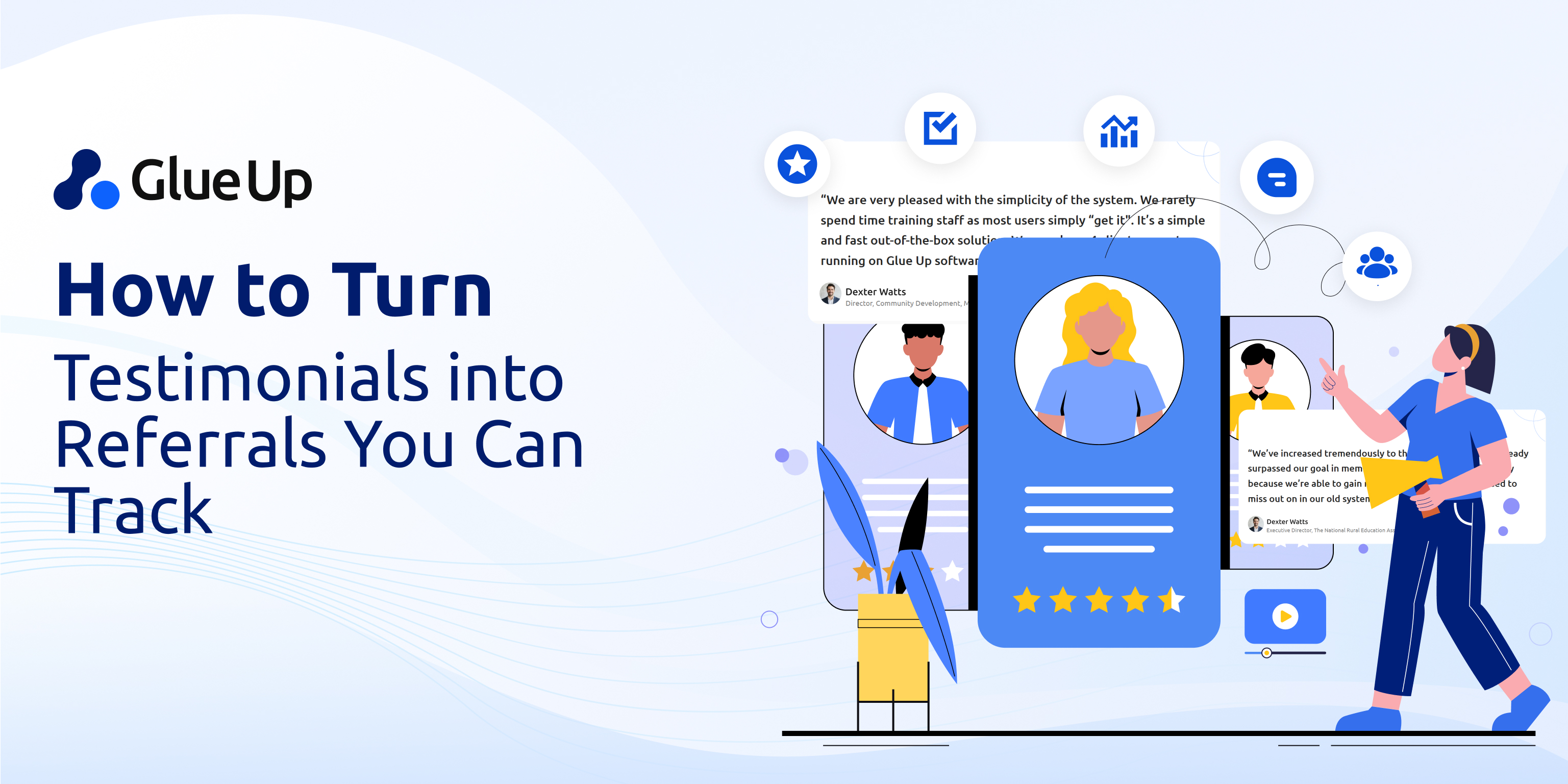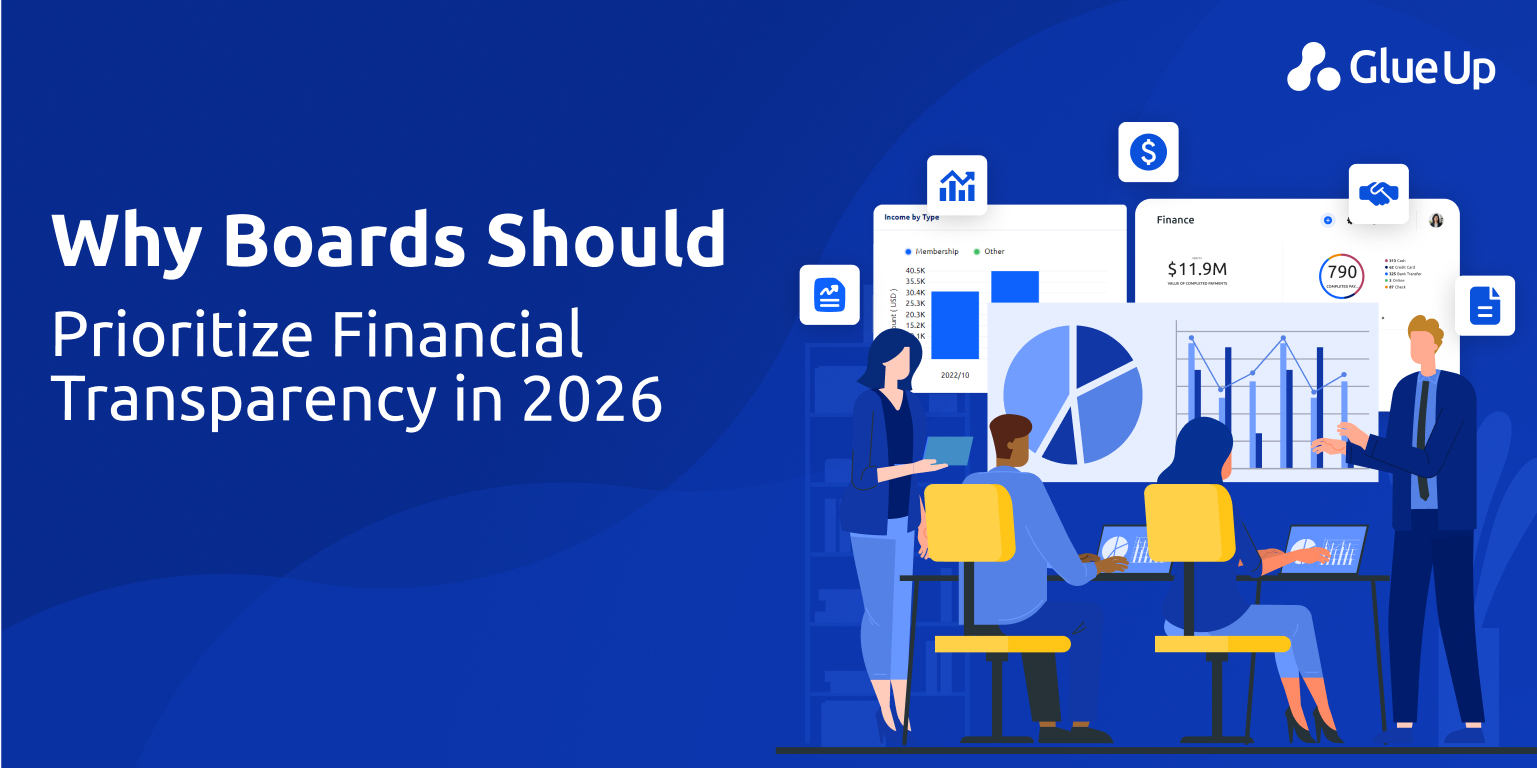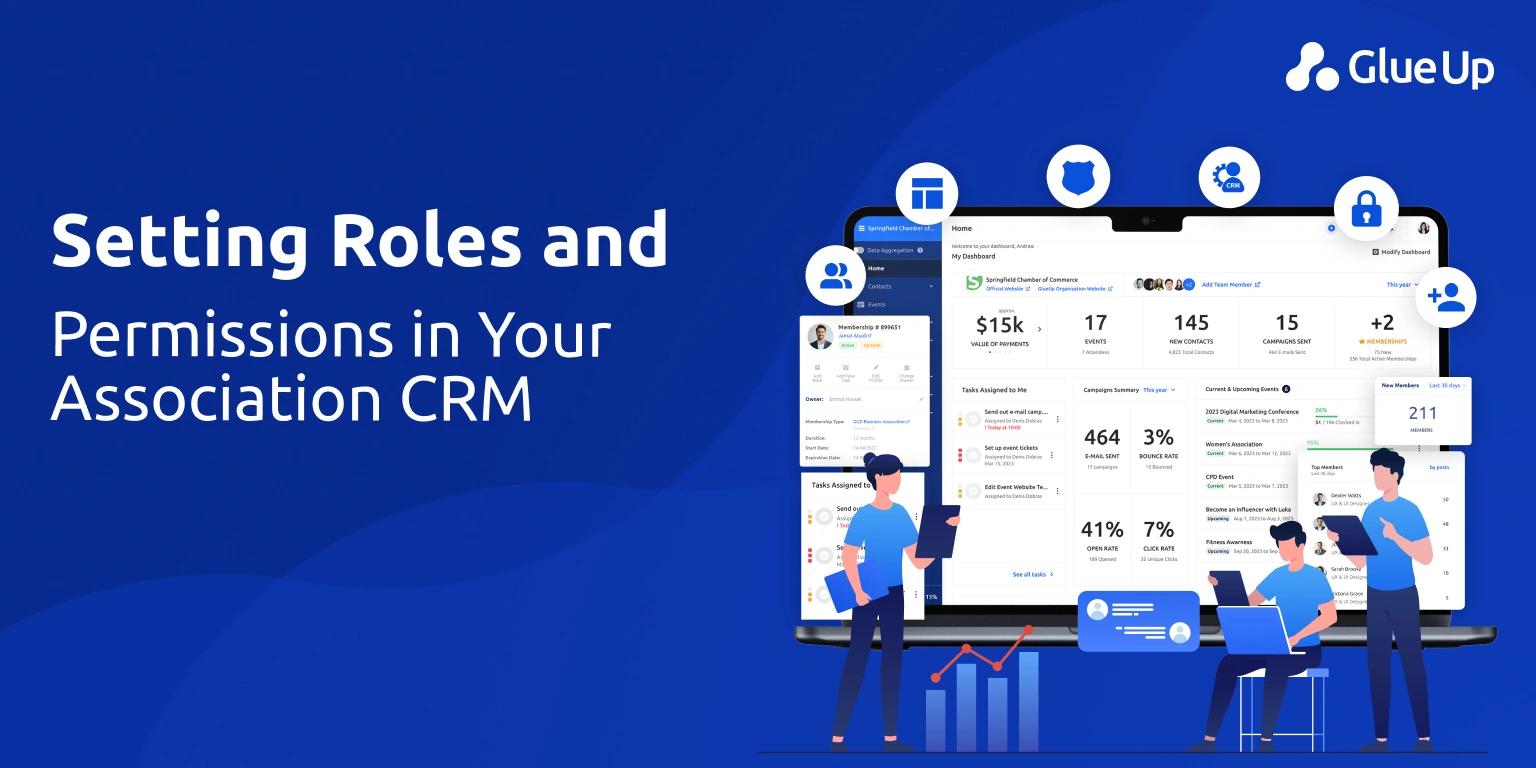
You already have great quotes hiding in inboxes and slide decks. The question is not whether members and sponsors have good things to say. The question is whether those words lift your renewal math, fill seats, and spark sponsor conversations you can track. Testimonial marketing is not decoration.
Testimonial marketing is a referral engine sitting in plain sight, waiting for you to give every story a path to share and a way to measure what happens next. If you can connect consent to context, context to a unique link, and that link to outcomes in your CRM, you will turn a handful of quotes into visible pipeline. That is testimonial marketing as an operating system.
Key Takeaways
Treat testimonial marketing like a product: capture consent and context, then give every story a unique code, vanity link, and QR so referrals are traceable.
Publish proof where decisions happen: join pages, event checkout, sponsor prospectus, renewal emails, and selected third-party review sites.
Turn NPS Promoters into an always-on referral cohort with a simple “thanks + share” ask, prewritten snippets, and each member’s personal link.
Measure what matters with a four-stage funnel: clicks, leads, conversions, revenue, plus a storyteller scorecard, standard CRM fields, and one GA4 event.
Keep trust high: store consent, disclose any incentives, avoid gating, recognize referrers in prosocial ways, and report results in a one-page board snapshot.
Quick Reads
Smarter Post Event Analytics for Better Org Growth • Glue Up
How to Create and Manage Effective Member Profiles • Glue Up
Glue Up Reseller Partner Testimonial: Fast Forward • Glue Up
Why Testimonial Marketing Still Works
Skeptical readers still trust people who look like them, do similar work, and name specific outcomes. That is why testimonial marketing continues to perform in membership, events, and sponsorships. It offers something most pages cannot: a peer in your niche, using your program, describing a clear result in a timeframe that sounds real.
Three proof cues do the heavy lifting:
Context: role, organization type, and program used
Quant: one number with a time window, like renewals up 12 percent in the last quarter, or sponsor leads doubled after the annual summit
Credibility: permission to publish, disclosure if any benefits were given, and a way to verify who is speaking
When you package these cues with a simple share path, testimonial marketing starts the human flywheel you need. One story finds a second. The second points to a third. You get the compounding effect without big media spends, because each story does a little work on your behalf.
Build Your Testimonial Marketing Pipeline Like a Product
Think of your pipeline as five tiny factories, each with one job:
Capture: Give members and sponsors a short form with six parts: permission to publish, disclosure approval, a prompt for one problem solved, a prompt for one number, an optional photo or logo, and a checkbox that says willing to refer peers. You are not chasing adjectives. You are collecting facts.
Context: Tag each story with role, tenure, program or event used, and locality. Add one artifact if possible: a screenshot, a slide title, or a public link you can cite. Context gives testimonial marketing the specificity search engines and skeptical readers both rewards.
Edit: Trim to 60 to 80 words. Open with the change, not the praise. Prefer “Our lapsed member win back rate improved from 18 percent to 24 percent in six weeks” to “The platform is amazing.” Short and specific beats long and glowing.
Assign: Give every storyteller a unique referral code and a vanity link, like yourorg.org or join or ANA. Save the code, the link, and the story in the contact record. The link is the spine of testimonial marketing. Without it, you are guessing.
Publish: Place the story where intent is highest. Join page, event checkout, sponsor prospectus download page, renewal reminders, onboarding emails. Publish where decisions happen.
Glue Up fits across these micro factories. Use Forms to collect consent and context. Use Smart Lists to segment by role, program, and tenure. Save the referral code in the CRM. Drop the quote block and QR on a landing page. Track clicks and outcomes. Testimonial marketing becomes muscle memory because the pieces live in one stack.
Wire Every Story to A Referral Path
A quote without a path is a poster. A quote with a path is a referral. The difference is small and practical.
Personal Link: create a unique link per storyteller. Do not rely on generic URLs.
Simple Parameters: standardize tracking so every link tells the same story in analytics.
utm_source=testimonial&utm_medium=referral&utm_campaign=storyteller_id&utm_content=asset_typeis enough.Share Cards: auto generate two social snippets and a one page PDF that includes the quote, the QR for the link, and a short note they can forward.
Placement Discipline: do not scatter links. Place the storyteller’s link only where their audience will see it. If the quote comes from a chapter leader, put it on the chapter toolkit and onboarding emails.
Inside Glue Up, store the link and code in custom contact fields, then auto insert them into email templates and page widgets. When someone clicks, the journey is attributable from the first touch. That is the practical heart of testimonial marketing.
Plug Testimonial Marketing into Your NPS Process
Your NPS program is a built-in engine for testimonial marketing if you turn Promoters into a standing referral cohort. When someone answers 9 or 10, send a polite thank you, a short prompt for a 60-word story, and their personal link to share with two peers in the same role. Keep it simple.
Give the member a sentence they can paste into email or WhatsApp. Add their QR to a small image card. Save the response, link, and code on the contact record. Now your NPS is a monthly stream of fresh stories and measurable referrals.
Three practical rules keep this clean:
Always include an opt out for future asks
Disclose any benefit if you plan to recognize top referrers with perks
Do not gate positive feedback; ask broadly, publish responsibly
With Glue Up, you can set a rule to tag NPS Promoters, fire the request, and log all submitted testimonials in the CRM. Testimonial marketing stays compliant because consent, disclosure, and assets live in the record you already use.
Place Testimonial Marketing Where Intent Is High
High intent surfaces are not mysterious. They are the places where people decide.
Join Page: pair one precise quote with a personal link from a member in the same segment
Event Checkout: add one attendee story and one sponsor outcome, each with a QR to bring a colleague
Sponsor Prospectus: include a 60 word sponsor ROI quote, and a QR to a deeper case study
Renewal Notices: remind members what another member got done this quarter, then add the storyteller link
Onboarding Email Two: a light asks to invite one peer using the storyteller’s card
Third party platforms matter too. If your audience uses B2B software directories and professional association listings to cross check claims, make it easy for happy members to post their story there. Link to your profile, offer guidance, and count those clicks as influence. Testimonial marketing travels farther when it shows up where buyers already shop for proof.
Measure Outcomes with A Simple, Defensible Model
Boards need a one pager, not a maze. Use a four-step funnel you can repeat every month:
Referral Clicks: how many clicks did testimonial links generate
Leads: how many started a join application, event registration, or sponsor inquiry
Conversions: how many joins, registrations, renewals, or sponsor deals closed
Revenue: what dollar amount arrived from testimonial sourced activity
Add two cuts that deepen the insight without adding noise:
Storyteller Scorecard: show top five storytellers with clicks, leads, conversions, and revenue
Secondary Referrals: show how many referrals came from people who were themselves referred
Set these fields once in your CRM: source type equals testimonial, storyteller equals ID or name, touchpoint equals join page or event checkout or email footer, referral code equals text. Set a GA4 event called testimonial referral click, with storyteller ID and asset type as parameters. In Glue Up, build one recurring report that your staff and your finance chair can both read in two minutes. When testimonial marketing looks this clean, it earns time on the board agenda.
Recognize Referrers in Ways That Fit Your Mission
In member-based organizations, social recognition and prosocial rewards typically outperform swag. Frame recognition around impact. Fund ten student passes because ten members referred peers. Invite top referrers to a short zoom with your executive director to preview next quarter’s priorities. List their names in the annual meeting booklet. Use clear disclosures if any tangible benefit is offered. Testimonial marketing feels honest when the thank you is public, specific, and tied to the mission.
Inside Glue Up, show appreciation in Community with a badge or shout out, send automated thank you notes, and pull a list of top referrers for your annual program. You keep the drumbeat steady without adding manual work to a small team.
Stay Credible And Compliant
Good process protects trust. Keep three bright lines:
Consent: capture a yes to publish, a yes to the name or role, and a yes to media use. Store the record with a date. If someone revokes permission, retire the asset, then update pages and downloads.
Disclosure: if there is any material benefit for a testimonial or a referral, disclose it next to the content. Use plain language. You are not hiding anything.
Balance: ask broadly, do not suppress every critical comment, and do not build a gallery that looks curated to perfection. Real organizations show progress, not perfection.
Your legal counsel will appreciate that testimonial marketing runs on a checklist instead of vibes. Your readers will notice the difference too, because credible process shows up on the page as calm confidence.
A 30- Day Testimonial Marketing Rollout Plan
Week 1: Capture And Classify
Ship a six-question intake form with consent and rights. Identify ten strong voices across roles: a chapter lead, a sponsor contact, a new member, a lapsed member who returned, and a longtime member who piloted a feature. Edit each to 60 to 80 words, keeping one number and one timeframe. Tag every story by program, role, tenure, and locality in the CRM.
Week 2: Wire Up Tracking
Create a referral code and a vanity link for each storyteller. Add a scannable QR. Configure GA4 for testimonial referral click with two parameters. Add CRM fields for source type, storyteller, touchpoint, and referral code. Generate share cards for each storyteller: a one-page PDF and two social captions. Save them on the contact record.
Week 3: Publish Where Intent Lives
Place one quote on the join page, one on event checkout, and one on the sponsor prospectus. Put a small testimonial card in the email footer of your newsletter for the next four weeks. Invite three Promoters from your last NPS run to share their cards with two peers in the same role. Encourage a handful of members to post on a respected review directory. Track clicks and starts.
Week 4: Recognize And Report
Run a prosocial recognition moment. For example, announce that each referral this quarter funds a student pass for the annual meeting, with disclosures. Close the month with a one pager to your board: four numbers, top storytellers, one quote, and three next steps. Schedule the next tranche of stories. Repeat.
This thirty day loop is not theory. Small teams can do it because each move is simple. Testimonial marketing becomes a steady heartbeat.
A Short Field Guide for Better Testimonial Marketing Interviews
When you talk to members or sponsors, skip the small talk and ask for movies, not adjectives.
“What changed in 30 days that you could show your treasurer”
“What is the one sentence you want a peer in your role to hear, and what should they click next”
“If this story were on a slide, what would the title be and what number would sit in the corner”
“Who is the next person like you who should see this, and why”
You will get three things you can use: a sentence that opens strong, a number that does not wobble, and a peer referral hook that makes sharing feel natural. That is testimonial marketing doing work, not polishing a trophy.
A One Page Board Snapshot You Can Reuse Every Month
Headline: Testimonial Marketing Drove 41 Joins And 82 Event Registrations in Q2
Clicks: 3,412 referral clicks from testimonial placements
Leads: 512 applications or registration starts
Conversions: 123 completed joins and 82 event registrations
Revenue: 186,400 dollars from testimonial sourced activity
Top Storytellers
Anita, Chapter Lead, Northeast: 1,004 clicks, 44 joins, 62,000 dollars
Omar, Sponsor VP: 612 clicks, 17 registrations, 9 sponsor meetings booked
Jess, Member Success Chair: 388 clicks, 12 joins, 18,800 dollars
Where It Worked
Join page hero, event checkout right rail, sponsor prospectus QR
Next Moves
Add two student voices for the Q3 scholarship drive
Expand to regional chapter pages with localized quotes
Launch NPS Promoter ask in week two of every month
Boards love this format because it is clear and repeatable. Staff love it because it takes one hour to update. Testimonial marketing earns runway when you report like this.
Glue Up Plays the Whole Field
In practice, the more scattered your tools, the harder it is to keep testimonial marketing alive. Glue Up gives you one lane to drive in.
Capture: Forms collect consent and outcomes. Smart Lists route stories to the right owners.
Context: Membership module tags stories by program, role, tenure, and locality.
Codes And Links: CRM custom fields store referral codes and personal links. Email templates auto insert them.
Placement: Website widgets and event pages host quote blocks and QR without extra vendors.
Measurement: Reports tie clicks to leads, joins, registrations, and sponsor revenue. GA4 events pass storyteller IDs for analytics.
Recognition: Community posts, badges, and automated thank you notes make appreciation easy to scale.
When your testimonial marketing lives in the same system as your members, events, and sponsors, the lift stays small, and the numbers keep showing up.
Frequently Asked Questions You Can Answer in Two Sentences
Does testimonial marketing work for small teams?
Yes. Capture six good stories, wire six links, place them on three high intent surfaces, and report four numbers monthly. You will feel the lift within one board cycle.
Can we ask for reviews on third party platforms?
Yes, if you follow the platform rules, avoid incentives that violate policies, and use natural guidance instead of scripts. Link members directly to your profile and disclose any minor thank you.
How do we handle mixed or negative feedback?
Listen, log, and fix what you can. A visible, respectful response often increases trust more than a perfect score.
What is the fastest way to measure referral revenue?
Start with a single GA4 event for testimonial referral click and one set of CRM fields. Do not overthink multi touch. Get directional truth, then refine.
How should we recognize referrers ethically?
Prefer public appreciation and mission aligned perks, like funding student passes or community grants. Disclose benefits clearly.
Next Step
Testimonial marketing is simple to describe and easy to forget. Quotes drift into PDFs. Praise gets lost in a Slack channel. Meanwhile, goals for renewals, registrations, and sponsor revenue do not wait. Bring stories back into the core of your operation.
Capture permission and context. Wire each story to a personal link. Place proof where intent is high. Measure a clean four step funnel. Recognize the people who bring others with them. That is how testimonial marketing moves numbers, month after month, in a way your board can see, and your staff can run.
Book a demo today and see how Glue Up tracks referrals from testimonials.
Download the testimonial intake and the board one pager templates to start this week.



